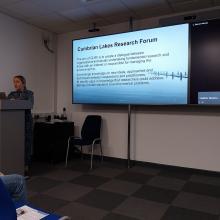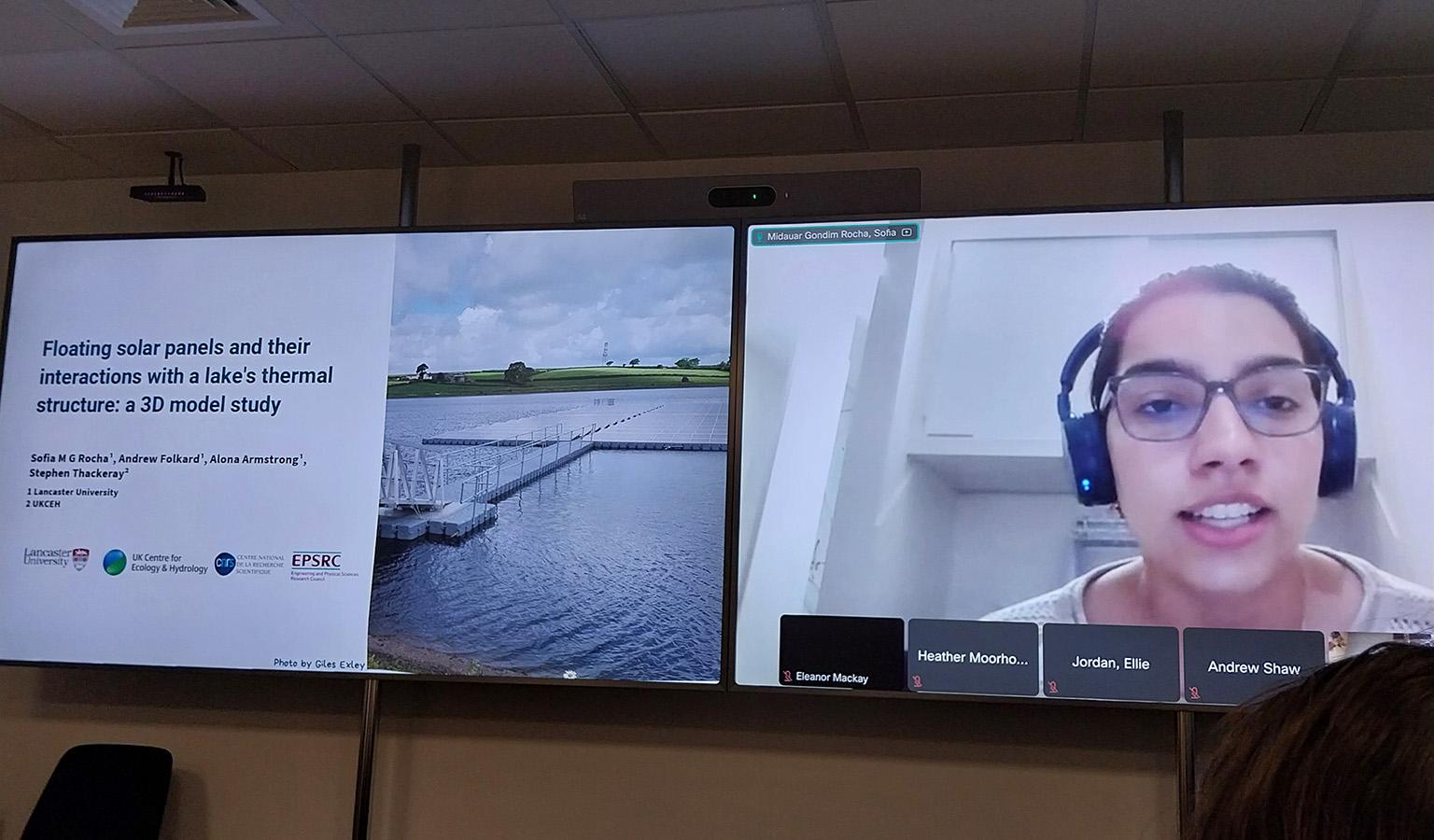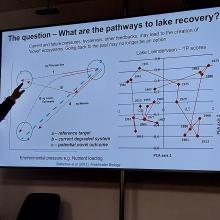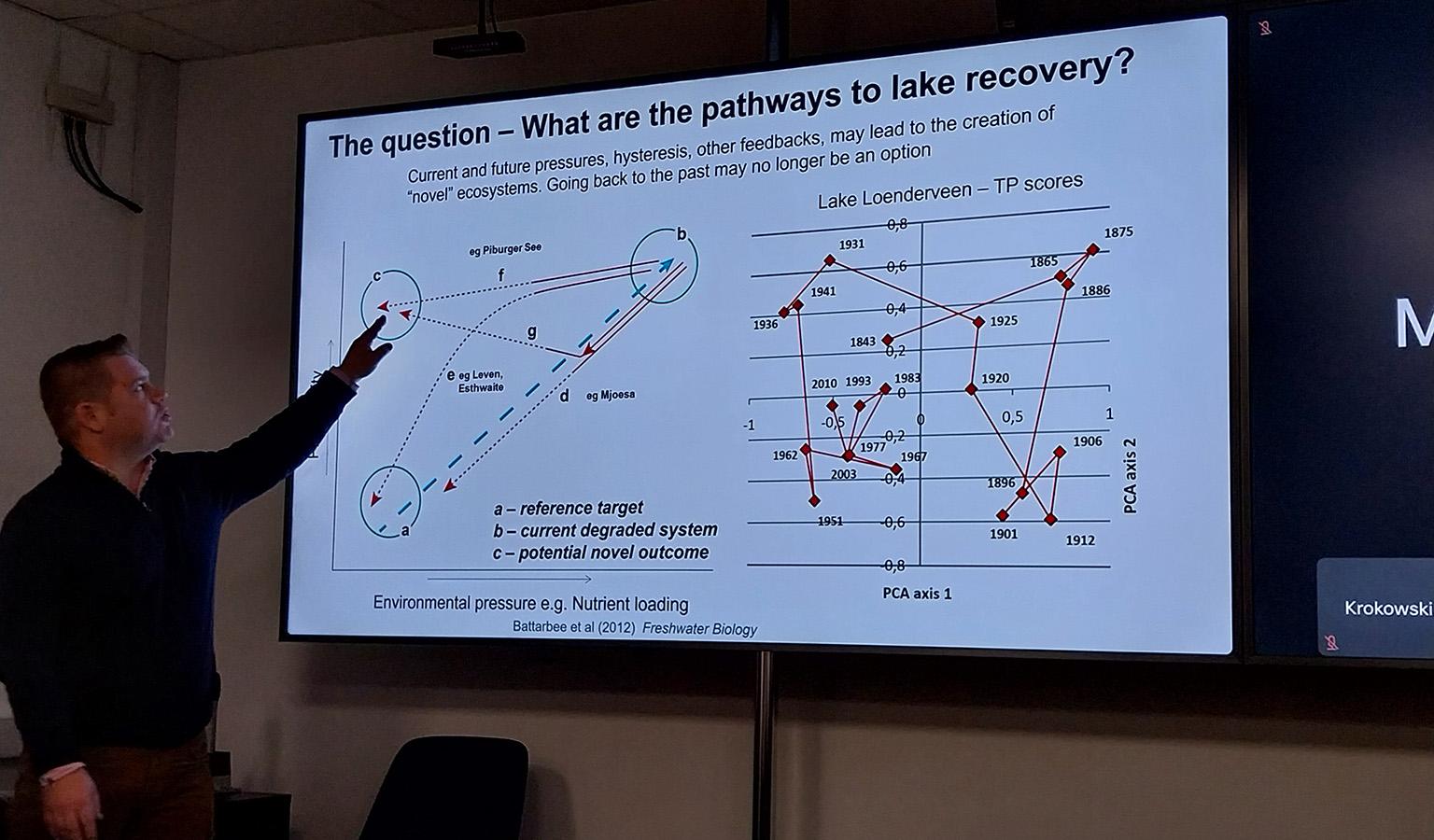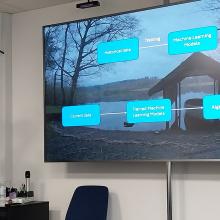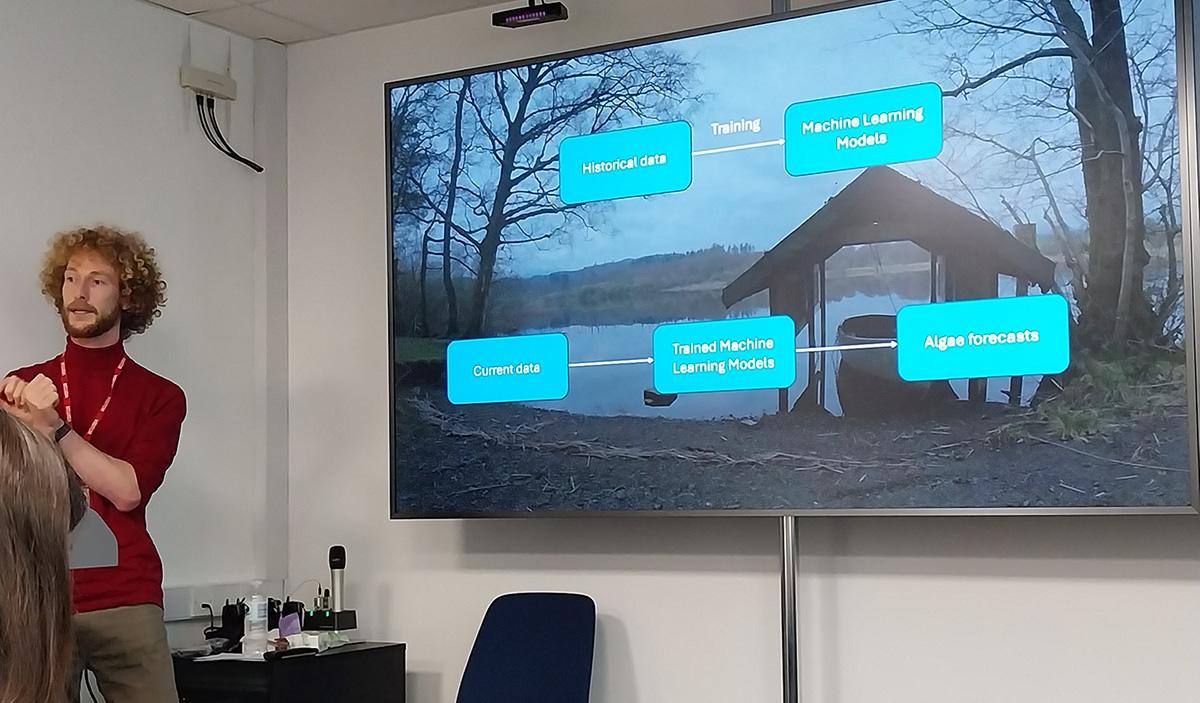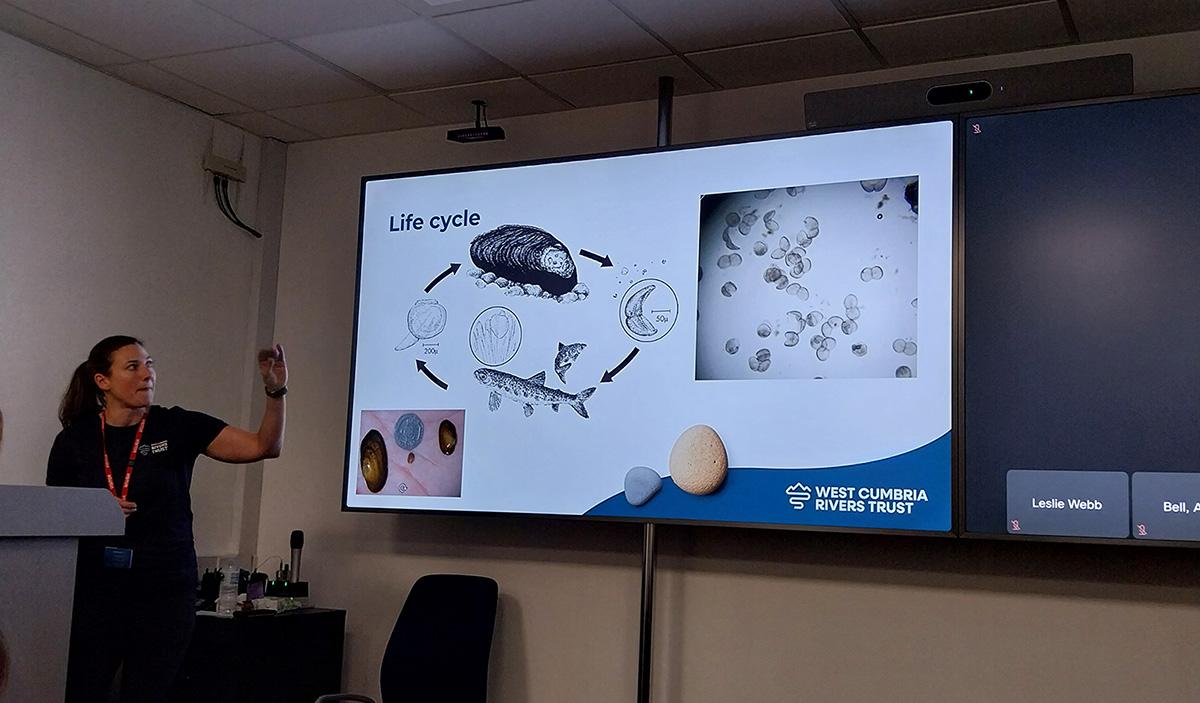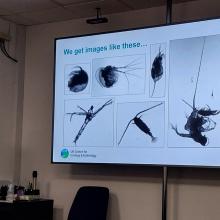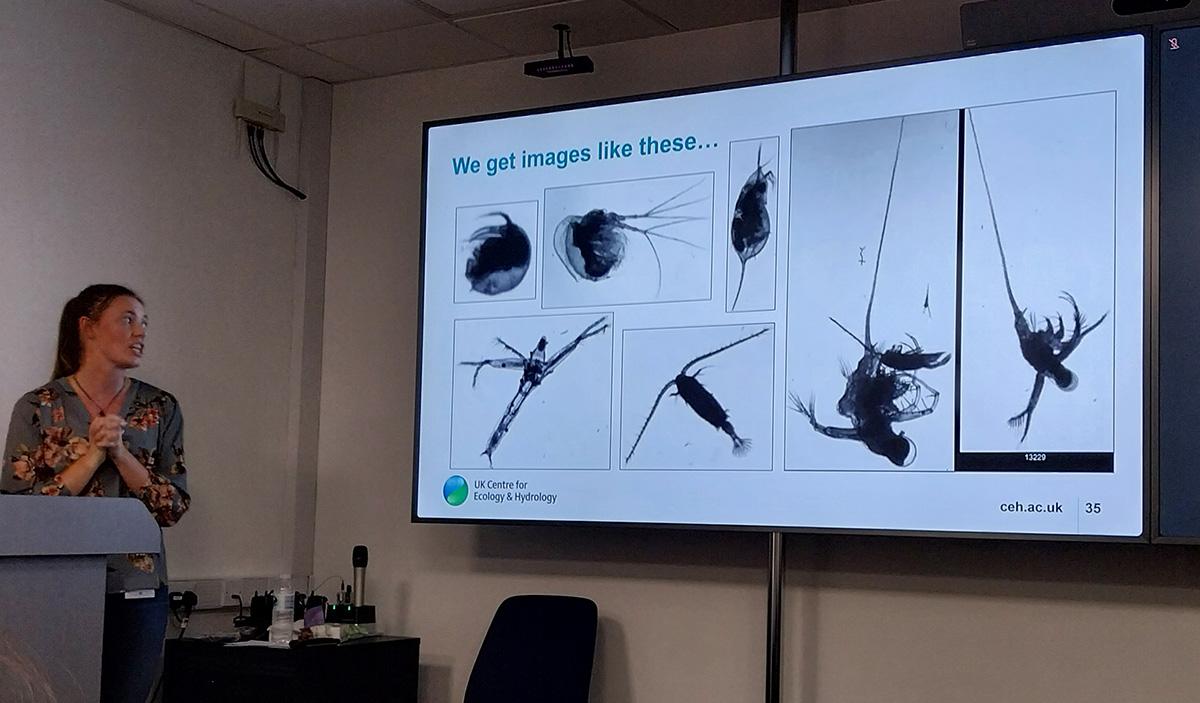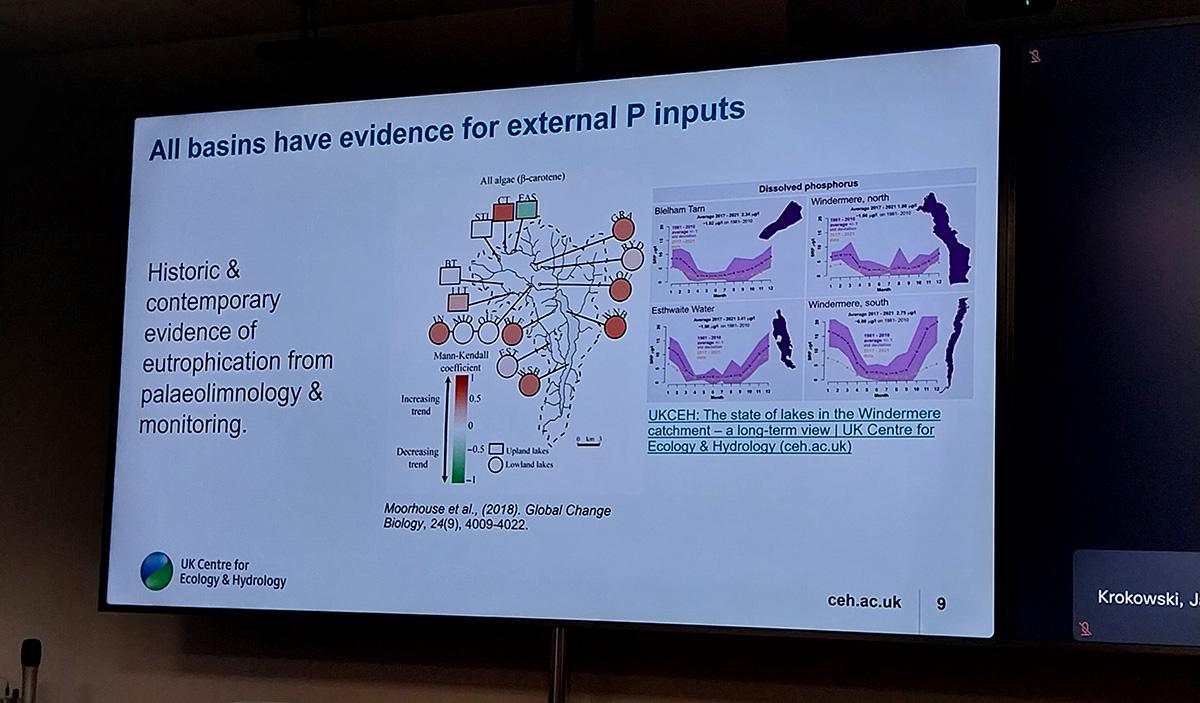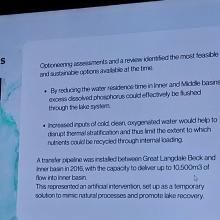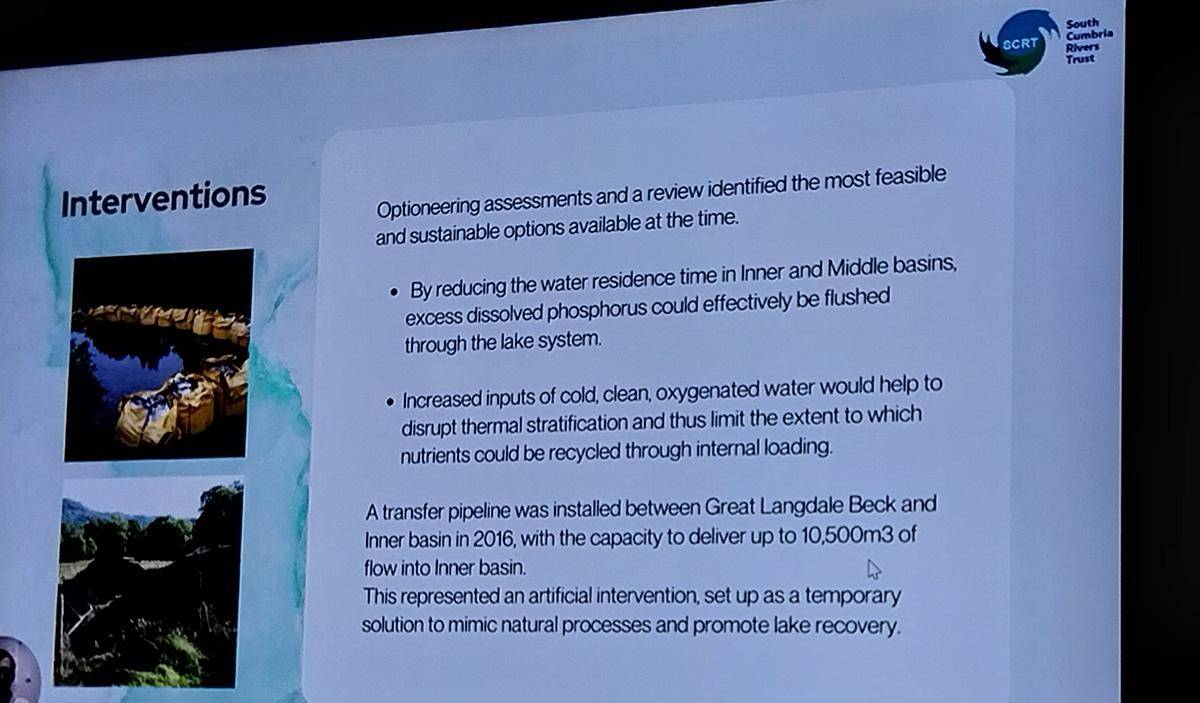The Cumbrian Lakes Research Forum 2024 highlighted new freshwater monitoring and modelling techniques and lessons learnt from river and lake restoration. Heather Moorhouse is our guide..,
On Tuesday 5 November 2024, the Cumbrian Lakes Research Forum met for its ninth annual event. We welcomed a cohort of almost half new and half previous attendees; an invaluable community networking opportunity for those working and doing research on lakes in the region and from across the country.
New monitoring and modelling approaches
Algal bloom forecasting can help water managers or recreational users of fresh waters, enabling further action like monitoring, mitigation, or modification to recreational activity. Maud Siebers, a PhD student at the University of Stirling, detailed the use of chlorophyll-a estimates from satellite observations to improve the predictive capabilities of forecasting models. Using Esthwaite Water in the Lake District as a test site (monitored under NC-UK) and novel statistical approaches, preliminary results indicate that more frequently measured Earth Observation data can improve algal bloom forecasting.
Attendees were introduced to another approach to algal bloom forecasting, using machine learning or artificial intelligence to predict when blooms may occur. Daniel Atton Beckmann, also a PhD student at the University of Stirling, introduced his research on understanding how much monitoring data, and which variables, are needed to optimise these data-driven forecasts. His findings conclude that for fortnightly data, close to optimum bloom forecasting is achieved when using the last five to ten years of lake monitoring data. This is likely best for representing the current environment rather than past conditions.
Daniel made the important point that progress in machine learning and model development are only possible when you have long-term monitoring datasets to train and validate them. Without monitoring this work is not possible.
Members of UKCEH's lake ecosystems group explained new approaches being integrated into the long-term monitoring of the Cumbrian Lakes Monitoring Platform, which has been running for 79 years. Kelly Le Quesne, a freshwater ecology assistant, talked about using automated imaging of zooplankton and the potential for machine learning to identify and count them. Combining freshwater plankton image libraries and implementing automated identification as part of routine monitoring and research is an emerging area in assessing and conserving of biodiversity in fresh waters. As with the bloom forecasts, automated image identification requires validation by traditional monitoring methods and taxonomic expertise.
Steve Thackeray, lake ecosystems group leader, detailed the Natural Environment Research Council-funded National Capability programme (NC-UK), which currently supports several of our long-term monitoring programmes. Despite the challenges of obtaining sustained funding for such work, the demand for evidence from monitoring and data-driven science to tackle the climate and biodiversity crises is higher than ever. This programme will invest in important long-term monitoring and new methods such as eDNA and data science. These efforts will help UKCEH create and share data and co-designed tools to address pressing issues facing our freshwaters, land and soil ecosystems, and species.
Restoration efforts across the region
Positive freshwater news can be hard to come by, but dedicated organisations and individuals using the best scientific evidence show that practical management can yield promising outcomes for our most endangered species.
Phillipa Chadwick from the West Cumbria Rivers Trust detailed their work as part of United Utilities Compensatory Measure Package on improving the habitat and recruitment of freshwater pearl mussels. Now critically endangered, populations of this species have been impacted by land-use intensification, climate change, and pearl fishing.
Across the region, West Cumbria Rivers Trust, with partners including the Freshwater Biological Association (FBA), have been carrying out habitat improvements including naturalising rivers, as well as increasing the recruitment resilience of breeding and juvenile mussels. While initial signs are promising, there is still a long way to go, with one of the biggest challenges being the need to improve populations of salmon and trout, which host the larval stage of the mussels.
Oliver Winder from South Cumbria Rivers Trust presented details of 10 years of restoration and monitoring undertaken at Elterwater. Elterwater is a shallow lake in the English Lake District consisting of three basins (inner, middle and outer). Like many natural lakes, its hydrology has been altered over time. Two inflows, Great and Little Langdale Becks, have been straightened and diverted from their original courses, resulting in the outer basin receiving 98% of the total inflow. Between 1974 and 1999 the inner basin also received wastewater and reached peak phosphorus concentrations in 1998 of 138µg per litre, making it highly enriched with poor water quality.
The combination of these impacts meant incoming nutrients were not being flushed from the lake’s inner and middle basins, leading to increased algal growth and pronounced deep water oxygen loss. Over the last decade, South Cumbria Rivers Trust and partners have carried out a number of restoration measures. Oliver discussed the difficulty in demonstrating and quantifying the impact of in-lake remediation measures, and the need for robust monitoring and assessment processes, particularly in the context of inter-annual variability in weather and nutrient inputs.
As seen with the Elterwater and freshwater pearl mussel projects, recovery pathways following management measures are complex and not fully understood. With climate change and pollutants, from nutrients to synthetic chemicals, affecting our waterways, we may never fully reverse or restore our lakes to past conditions.
Grounded in these important uncertainties, Richard Walton from the University of Southampton introduced the NERC-funded RESTORE project. This new project is using lake sediments and long-term data to study how lakes and their communities respond to restoration. It aims to understand which organisms respond quickest to restoration and which factors have the most significant impact, making use of detailed monitoring data from the UKCEH lakes programme and lakes across Europe and Asia.
Nutrient cycling in fresh waters
Inputs of excess nutrients from wastewater, non-mains discharges and agriculture continue to cause water quality issues in the Lake District, with the condition of Windermere, England’s largest lake, under particular public scrutiny.
To improve our understanding of nutrient budgets in the region, UKCEH undertook a systematic review of scientific reports, publications and data to examine the role of internal phosphorus loading in the Windermere catchment lakes (report available to download: Science and Data – Love Windermere). Internal loading refers to the release of nutrients such as phosphorus back into the water column from sediments, a process that worsens under anoxic conditions (ie, lack of oxygen) at the sediment surface and in bottom waters.
Heather Moorhouse, freshwater ecologist at UKCEH, detailed the main findings of this research. The evidence across different lakes was limited and varied. Elterwater inner basin had the highest sediment phosphorus content of those lakes where records exist and experiences seasonal anoxia, suggesting it is at high risk of internal loading. This work highlights the importance of managing catchment nutrient sources and enhancing climate resilience, particularly of smaller lakes in the region.

